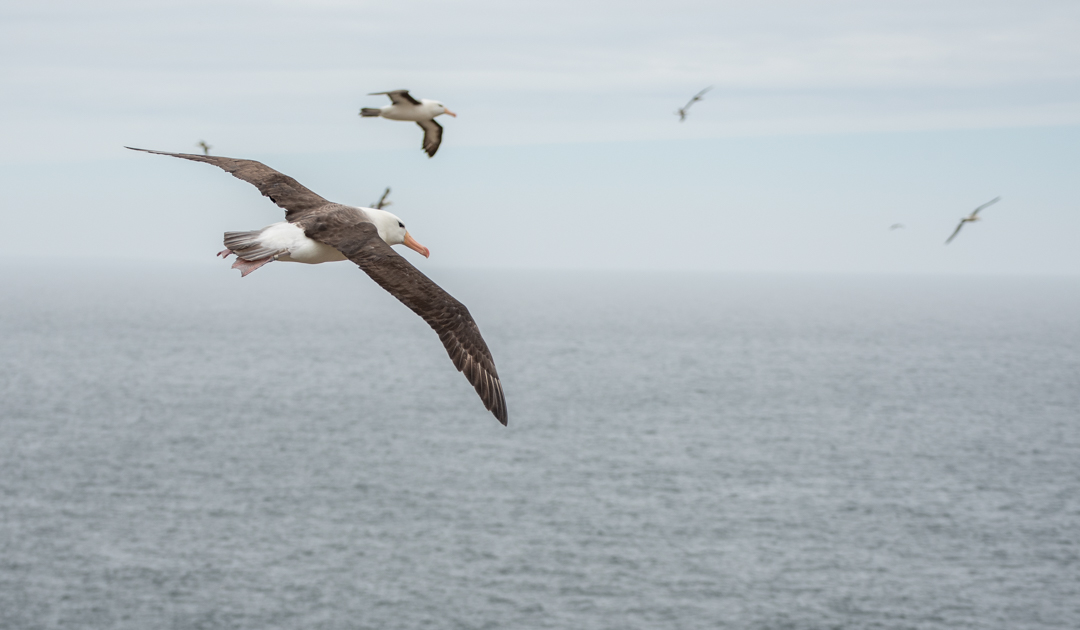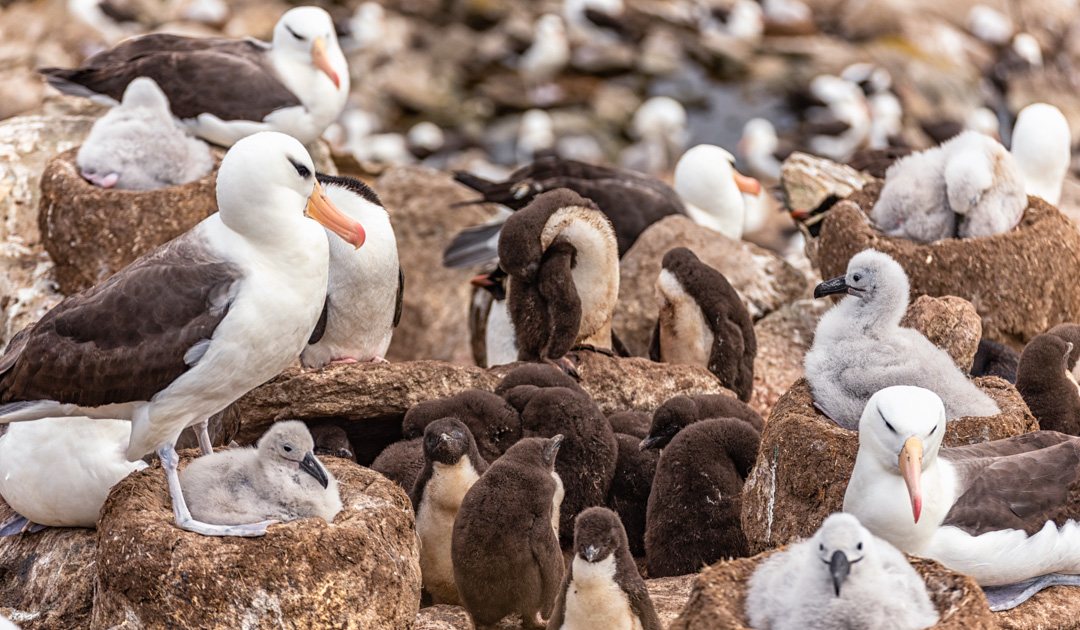
The rocky coasts of Great Britain are known among ornithologists for their rich and diverse bird life – numerous species can be observed here: from rather subarctic Black-throated loons and skuas to species that one would rather expect in the Mediterranean region. A very special species now once again makes the hearts of bird lovers beat faster. A few days ago, the Black-browed Albatross, which has been sighted on the Yorkshire coast in summer for several years, returned to Bempton Cliffs.
The Black-browed Albatross(Thalassarche melanophris) is the most widespread and the most common member of the albatross family. And yet it is an absolute rarity over European waters. Its range is exclusively in the southern hemisphere, with the largest known breeding colony in the Falkland Islands.
The UK’s Royal Society for the Protection of Birds (RSPB) first reported the sighting of a Black-browed Albatross at Bempton Cliffs nature reserve in Yorkshire in October 2016. In subsequent years, the seabird has returned repeatedly to the cliffs, which are used as breeding grounds by gannets, puffins, razorbills, guillemots, kittiwakes and fulmars. This year, the special guest was observed again – on June 28, a few days earlier than last year, it landed among the gannets.
It is possible that this Black-browed albatross is the same bird that has found its new home in the Baltic Sea around Germany and Denmark since 2014, according to the information website Yorkshire’s Wildlife. From there, it seems to make occasional trips to the British coast. However, avid birdwatchers feared that he might not have survived last year’s attacks by several sea eagles off Denmark. They were all the more delighted, and in some cases moved to tears, when he reappeared at Bempton Cliffs a few days ago.
“It’s the same German bird that visited last year, almost at the same time. We had constant views between around 6.20-10.20am on Tuesday morning and it landed five times,” as RSPB’s Maria Prchlik told the Yorkshire Post.
Black-browed albatrosses breed in the southern summer on sub-Antarctic islands and spend the winter over the cold, nutrient-rich ocean currents off Brazil and South Africa. This “lost” wanderer was apparently blown off course and has been circling over the North Atlantic ever since.

According to Craig Thomas, Chair of Flamborough Bird Observatory, the albatross is looking for a resting place on the cliffs, possibly hoping to find a mate, but is attacked by resident gannets. Thomas further explains to the Yorkshire Post, “There have only been two birds recorded in the North Atlantic in the past 10 years, so it’s probably one of these. They often follow gannets and tag along with them, then sit in the colony. There are around 15,000 pairs of gannets at Bempton and I think it has followed them back to the cliffs.”
The fate of the displaced Black-browed albatross seems clear – the sailor will hardly make it back across the windless equator and he will probably remain forever as a single among gannets in the northern hemisphere.
Julia Hager, PolarJournal
More on the subject:





